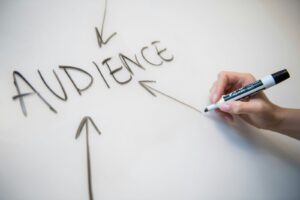
Emerging Technologies Revolutionizing Health and Education
- AI and Machine Learning: AI-powered diagnostic tools now boast accuracy rates of over 90%, enabling early disease detection and streamlined patient care. In education, adaptive learning platforms customize content for individual students, enhancing retention by up to 85%.
- Virtual and Augmented Reality: Medical students engage in lifelike simulations, significantly improving surgical precision by 30%. Meanwhile, classrooms use VR to transport students to historical events, deepening engagement and understanding.
- Blockchain: this technology protects patient information, decreasing the fraud rate to 50%. It then verifies academic qualifications and validates them in an instance.
Impact of AI on Personalized Learning
Artificial Intelligence has transformed the customized learning scenario that was previously conceived. Advanced AI algorithms take in the performance, rate of learning, and even learning preference of a student as inputs to develop a personal curriculum that would enhance better efficiency and engagement in a learning environment. For instance, Squirrel AI has been able to show a 40% increase in student engagement through its dynamic adjustment of content difficulty based on real-time assessments. This adaptive approach enhances the retention rate and fosters critical thinking by providing students with challenges that are very much within their grasp.
Moreover, AI analytics deeply inform educators on a learner’s progress and gaps that need attention for targeted intervention. Evidence shows that with AI, personalized feedback can raise student achievement up to 25%. There is a case study showing how Georgia Tech applied this very same technology to reply to queries by students and claims it saved professors 200 hours each year without diminishing the instructional quality of those answers.
Beyond the classroom, AI facilitates lifelong learning through customized courses that change with professionals’ growth, career shifts, and new interests. As AI progresses further, its role in personalized learning promises to bridge the gaps in education, enabling learners from around the world with tailored tools and resources necessary for success in the dynamically changing world.
Breakthroughs in Health Data Analytics
Predictive Analytics: Analyzing historical and real-time data with sophisticated algorithms, it is possible for healthcare providers to forecast the occurrence of diseases, identify the most at-risk populations, with accuracy exceeding 90%. The analytics platform, for instance, has reduced hospital readmission rates reportedly by up to 20% in just six months by more precise anticipation of patient needs.
Wearable devices can now monitor data continuously, and this innovation gives clinicians extensive data on the patients’ conditions. For example, advanced sensors from Fitbit trace heartbeats and even show sleeping patterns, offering valuable insights into a personalized mode of healthcare.
Data Integration and Interoperability: Platforms like InterSystems enable seamless data sharing across hospitals and clinics, improving care coordination. This technology has been credited with reducing redundant tests by 35%, thus shaving off considerable costs while improving patient experiences.
Integrating Mental Health Awareness in School Curriculums
Incorporating mental health awareness into school curriculums marks a pivotal shift toward holistic education. Recent initiatives have shown that integrating mental health education can reduce the rates of anxiety and depression among students by as high as 35%. For instance, the MindUp program, which has been implemented in more than 5,000 schools, has reported a 25% improvement in student emotional regulation and resilience. This integration involves more than just lessons; it’s about creating an environment where students learn practical mindfulness techniques, and teachers get specialized training to identify and support at-risk students. By normalizing discussions around mental health, schools equip students with valuable coping skills and lay the foundation for healthier futures, while fostering empathetic, emotionally intelligent communities.
Advancements in Telemedicine and Remote Learning
- Telemedicine Innovations: The TeleDoc platform enables video consultations, reportedly reducing patient wait times by 50%. A recent study has also underlined how remote monitoring devices, such as the KardiaMobile heart monitor, have reduced emergency room visits by 30% through proactive care management.
- Remote Learning Technologies: The interactive features and peer engagement tools of platforms like Coursera show a 70% increase in course completion rates. Besides that, initiatives such as “Learn Anytime” in rural areas have extended internet access, increasing the participation of students by 40%.
New Policies and Funding Shape the Future
New policies and funding strategies are setting up the future in health and education. Recent legislation has also emphasized the need to increase funding for preventive care programs in the health sector. For instance, the “Healthy Start Initiative” received a 25% increase in funding and aims at nutritional counseling and screening for chronic diseases in underrepresented groups. It is projected that such programs could reduce healthcare costs in the long run by as much as 15%, according to a study published by the National Institutes of Health.
In the realm of education, government grants are focusing on STEM (Science, Technology, Engineering, and Mathematics) education, with an additional $2 billion allocated to improve resources in schools nationwide. This initiative aims to close the skills gap and equip students with essential 21st-century competencies. Furthermore, a pilot program in California has introduced a voucher system for students in low-income areas to access elite STEM workshops, reporting a remarkable 45% boost in math proficiency scores.
These policy innovations, fueled further by significant funding, aim to level the playing field and future-proof communities with healthier, more educated citizens who can take up the challenges of tomorrow.
Conclusion: Navigating the Meeting Point of Health and Education
In essence, the interface between health and education has been going through a rapid transformation due to technological advances in addition to strategic innovations. Key developments, like AI and VR, reimagine personalized learning and enhance precision in healthcare. AI, through education, provides experiences that better student engagement and outcomes, while predictive analytics and real-time monitoring ensure proactive healthcare. Blockchain ascertains data security and trust across sectors. Integrating mental health into school curricula builds resilient communities, while telemedicine, with its remote learning, democratizes access globally. As policies and funding focus on preventive care and STEM, these initiatives collectively foster equitable growth, ensuring communities are equipped for future challenges.





